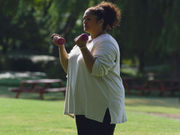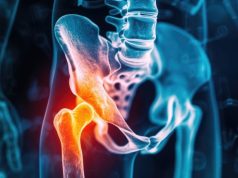Light physical activity now recommended every 30 minutes, not every 90 minutes
THURSDAY, Oct. 27, 2016 (HealthDay News) — Patients with diabetes should do three or more minutes of light activity every 30 minutes during prolonged periods of sitting, such as working on a computer or watching television, according to the latest recommendations from the American Diabetes Association (ADA) published in the November issue of Diabetes Care.
Previously, the association recommended light physical activity for every 90 minutes of prolonged inactivity. The new guidelines are based on a review of more than 180 studies and the input of diabetes and exercise experts.
The guidelines emphasize specific types of exercise — aerobic exercise, resistance training, flexibility and balance training, and general lifestyle activity. They also elaborate on how each type of exercise helps patients. There are also activity suggestions for women with gestational diabetes, who should do aerobic and resistance exercise. Also, individuals with prediabetes are urged to combine increased physical activity with healthy lifestyle changes to prevent progression to type 2 diabetes.
“These updated guidelines are intended to ensure everyone continues to physically move around throughout the day — at least every 30 minutes — to improve blood glucose management,” Sheri Colberg-Ochs, Ph.D., consultant/director of physical fitness for the ADA and lead author of the guidelines, said in an association news release. “This movement should be in addition to regular exercise, as it is highly recommended for people with diabetes to be active. Since incorporating more daily physical activity can mean different things to different people with diabetes, these guidelines offer excellent suggestions on what to do, why to do it, and how to do it safely.”
Full Text (subscription or payment may be required)
Copyright © 2016 HealthDay. All rights reserved.








